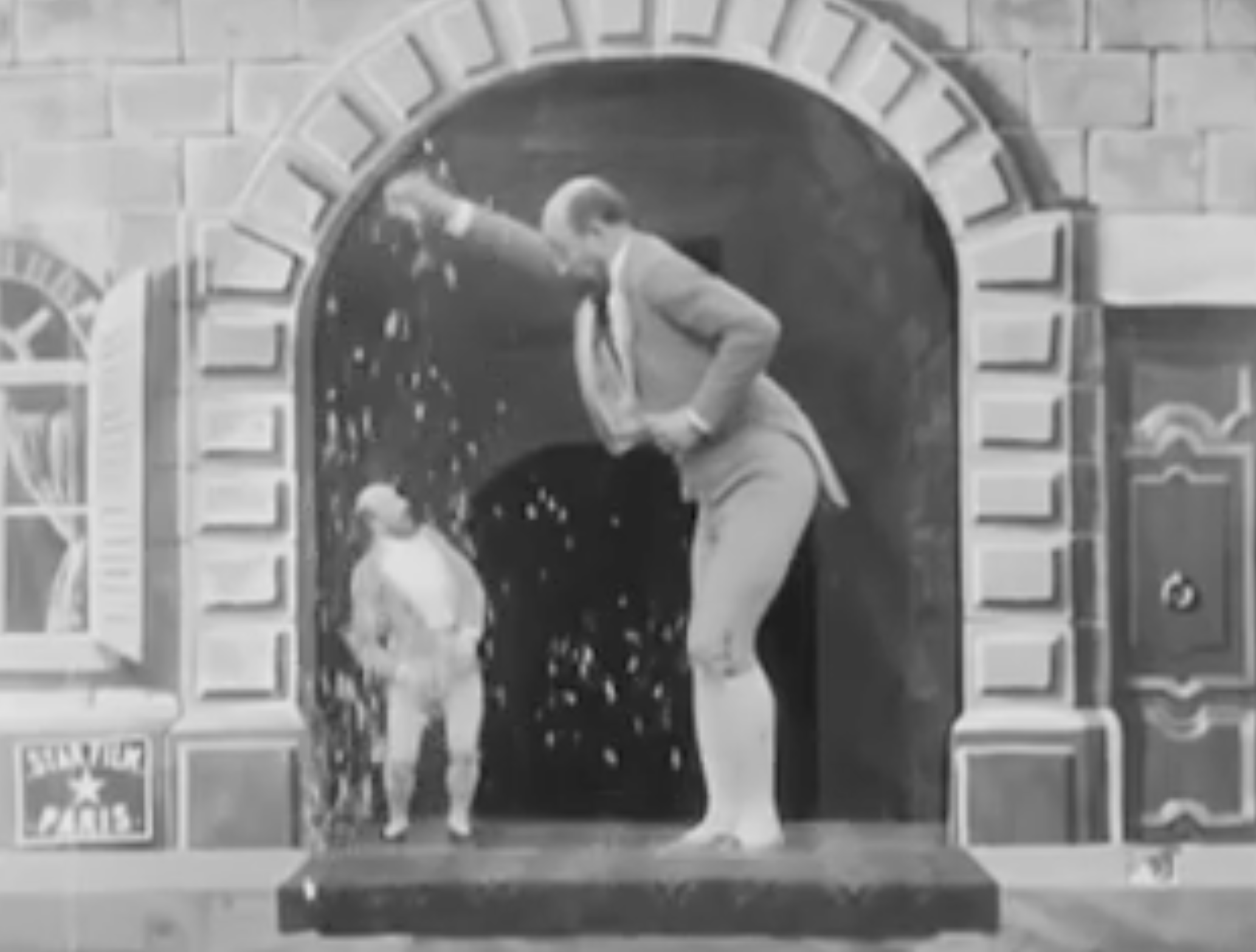The Dwarf and the Giant
October 27, 2020
Between 1896 and 1913 French film pioneer and illusionist Georges Méliès directed over 500 films. Most of them were very short experiments exploring the possibilities of special effects inspired by the tradition of stage magic. As such the appearance and disappearance of objects and people features very heavily in his work. But the medium of film also created new possibilities to trick the eye: most importantly the ability to change size.
‘The dwarf and the giant’ (1901) is the earliest known film showing a shrinking person. It laid the foundation for a rich body of films that play with the fantasy of becoming smaller and how it changes relationships between people and their environment. Méliès use of the camera shows the early days of wonder about the effect of changing perspective. Yet in all its simple curiosity it still shows some of humanity’s confused relationship with human height as the giant seems to ridicule (or is it celebrate?) the small size of the other as he showers him with confetti. Confetti is about celebration and adding effect. Like magic its intention is to blur the senses. Smallness then and now relates to this magic: The magic of pint-sized mythological characters, the magic of the unknown, the magic of smallness as a way to disrupt current affairs. ‘The dwarf and the giant’ should be celebrated as a pivotal point not just in the cinematographic history of shrink films but in the awakening of the human desire to shrink to better fit the Earth.